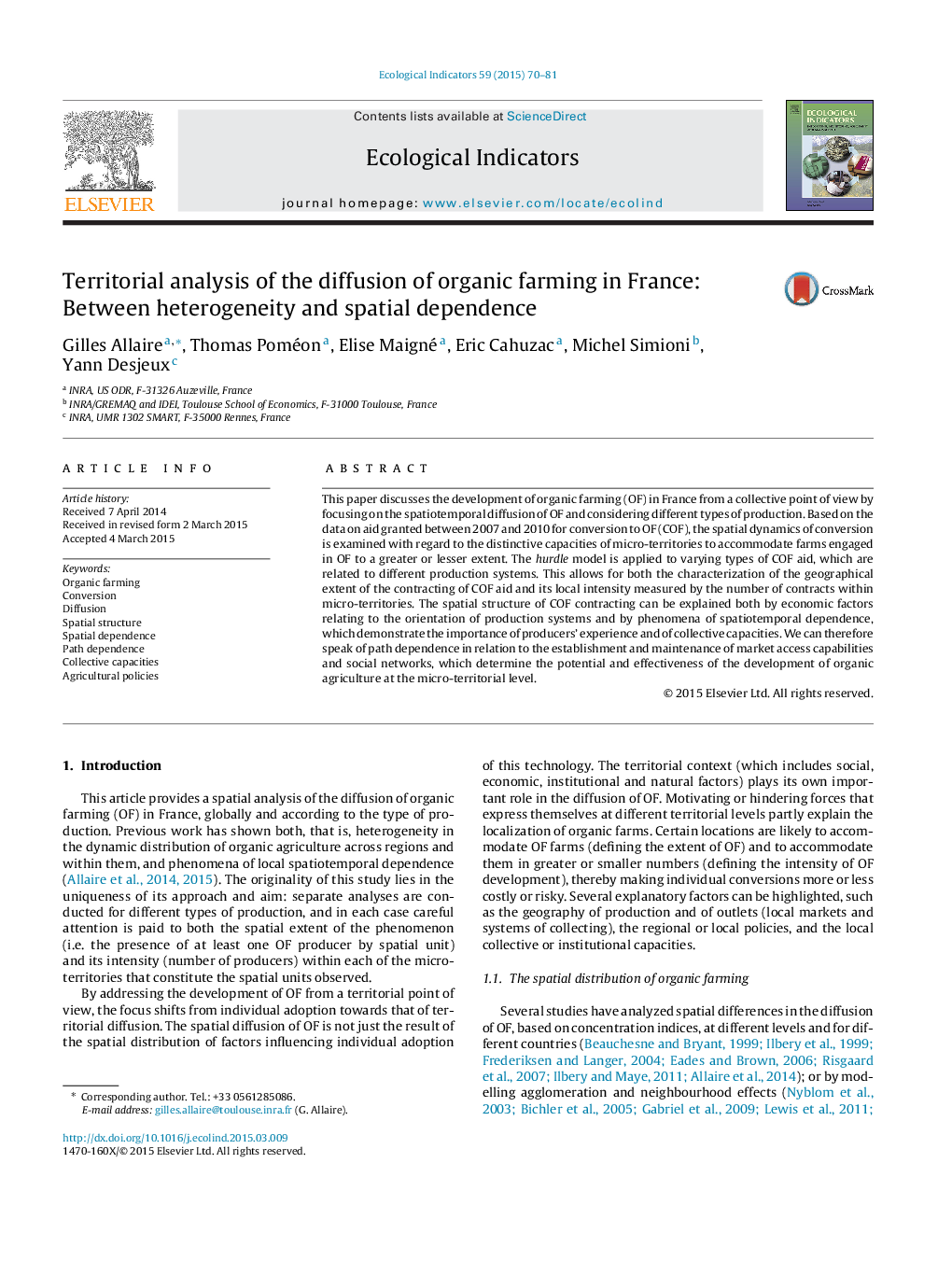| Article ID | Journal | Published Year | Pages | File Type |
|---|---|---|---|---|
| 4372972 | Ecological Indicators | 2015 | 12 Pages |
•Extent of conversion to organic farming (COF) and its local intensity are analyzed.•ICOF aid data (2007–2010) are aggregated for micro-territories.•A two stages hurdle model addresses extent and intensity different production systems.•COF clustering is significant despite diffusion into new territories and productions.•Spatiotemporal dependence exists, related to past collective institutional experience.
This paper discusses the development of organic farming (OF) in France from a collective point of view by focusing on the spatiotemporal diffusion of OF and considering different types of production. Based on the data on aid granted between 2007 and 2010 for conversion to OF (COF), the spatial dynamics of conversion is examined with regard to the distinctive capacities of micro-territories to accommodate farms engaged in OF to a greater or lesser extent. The hurdle model is applied to varying types of COF aid, which are related to different production systems. This allows for both the characterization of the geographical extent of the contracting of COF aid and its local intensity measured by the number of contracts within micro-territories. The spatial structure of COF contracting can be explained both by economic factors relating to the orientation of production systems and by phenomena of spatiotemporal dependence, which demonstrate the importance of producers’ experience and of collective capacities. We can therefore speak of path dependence in relation to the establishment and maintenance of market access capabilities and social networks, which determine the potential and effectiveness of the development of organic agriculture at the micro-territorial level.
